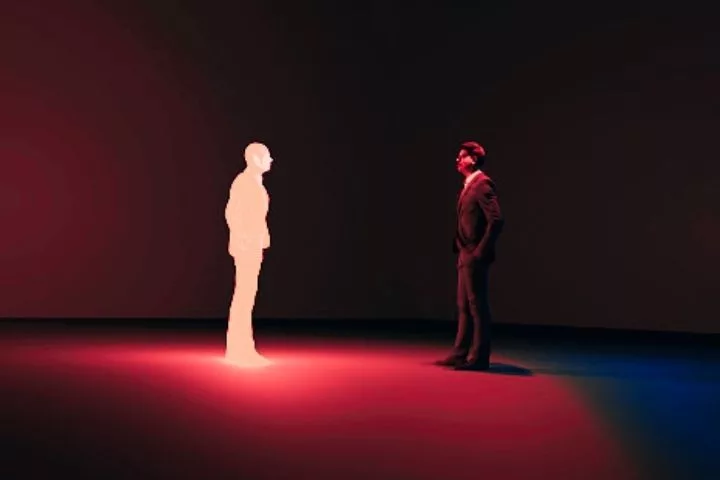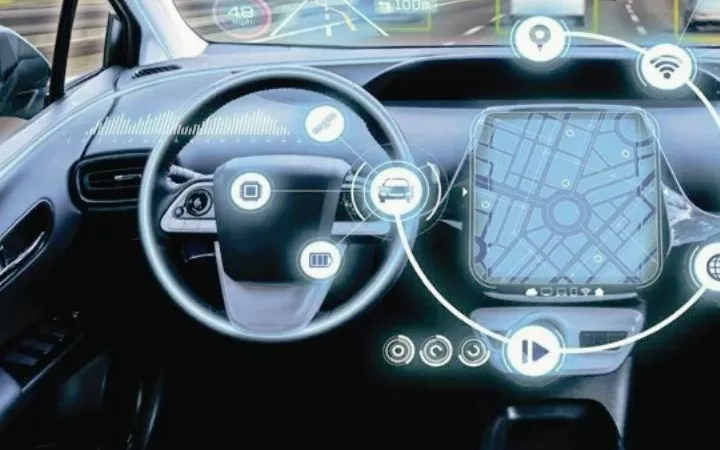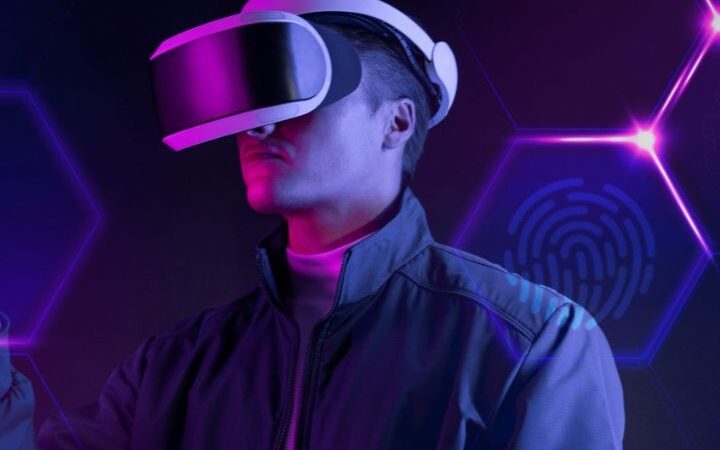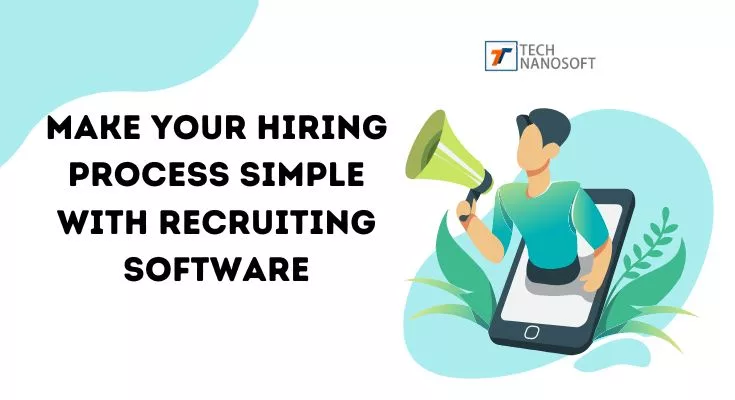Take A Look At The Trending Technology: Holograms – copies of reality

So far, holograms are known from science fiction films such as Star Wars or Blade Runner. Another main mission was the “appearance” of the late rapper Tupac Shakur at the Coachella Festival in 2012. But companies have been thinking about the technology since the pandemic at the latest.
Everyone is seated at one table, even though everyone is in a very different city. The people can touch but don’t feel any of it. What sounds contradicting itself could soon be normal.
A few weeks ago, Microsoft presented its mixed reality platform “Mesh”. Employees can use it to create three-dimensional digital versions of themselves and participate in virtual meetings in this form. Using virtual reality glasses, the colleagues perceive each other as if they were close to one another.
Microsoft wants to lift the cooperation at a distance from the video conference to the next level. First of all, avatars can be used – figures representing you in the way you would like to.
Soon it should be possible to project yourself into virtual space as a lifelike self. As? Certain Microsoft cameras can scan objects in their field of view and convert them into a 3D model.
This model is then transmitted to the conversation partner and displayed in their VR glasses. The consulting company Accenture has already developed a virtual office floor with Microsoft.
Holograms are no longer visions of the future.
However, holography is currently neither fully learned nor are all the tools available or fully developed. Nevertheless, holograms or holographic techniques are no longer a vision of the future or a secret gimmick in the physical ivory towers of the research institutes.
Still, they are increasingly being used across the board: a versatile technology for manufacturers of complex visualization systems. This also applies to existing volumetric data, which can now be displayed volumetrically, i.e. really three-dimensionally – and not just stereoscopically – using holographic methods.
In other words, it is not about a finished holographic display or product that can be ordered from a catalogue by serial number. It’s about the very complex developments, the know-how or the possibility of realizing such or comparable technical displays and products for and with customers according to their needs.
Ideally, they can be used across all applications and manufacturers based on the modular principle. That is, as long as manufacturers or system integrators can produce their own devices and systems themselves, depending on the effort, interfaces or technical requirements.
Digital conferences will remain in the long term.
In the past few months, bosses have learned to forego the physical presence of their employees. Digital conferences via Teams or Zoom have replaced direct exchange pretty quickly.
And even if offices fill up again in the future, colleagues will meet less often in full conference rooms – either because they appreciate the home office or because companies save costs for flights, hotels and rental space.
That is why the big tech companies are investing a lot of money to make digital space more attractive. After all, video conferencing is so tiring after a year that there is a term for it – zoom fatigue.
According to studies, what annoys many people about this is that everyone is watching each other, but no one is looking at the other properly. In addition, people are used to perceiving non-verbal expressions in conversations.
The tech companies aim to transfer the world of work into digital so that employees feel comfortable there and stay longer.
Mark Zuckerberg works with Ray-Ban on glasses.
The Hololens 2 digital glasses sold by Microsoft are quite bulky and cost almost 4,000 euros. But the market is growing – and with it the options: a few years ago, Facebook developed the Oculus glasses, the latest generation of which only cost 350 euros.
In 2007, the department responsible for this made up a very small proportion of the entire group. It had around 1,000 employees. The share has now grown from around five per cent to around 20 per cent of all employees.
Mark Zuckerberg also announced AR data glasses in cooperation with the well-known glasses manufacturer Ray-Ban. Explanation: With virtual reality (VR), a user with small screens in the glasses immerses himself completely in a digital world. With augmented reality (AR for short), artificial objects are displayed in the real environment.
Which companies are still working on digital glasses that are currently still essential for virtual meetings? Google bought the smart glass manufacturer North and is supposed to work on a new edition of Google Glass.
According to several reports, Apple is developing AR glasses called “Apple Glass” that could be presented next year. The market researchers from Strategy Analytics expect that by 2025, 27 billion dollars can be generated worldwide with hardware for augmented and virtual reality. According to the analysts, the trend towards home offices will accelerate this.
Harth hopes for it. “The example of climate conferences makes it particularly clear how damaging to the climate jetting around the world can be for an international meeting,” he says. Compared to video calls, holding conferences would also strengthen the relationship level.
“You just perceive each other physically here,” explains Harth. “Such meetings feel more intense, real, and personal.” Some systems are designed so that you can hear each other louder when the avatars or holograms get closer.
Will we still keep the realities apart?
At the pharmaceutical company Pfizer, researchers can virtually walk around molecules. The “Spatial” app used for this also allows digital conversations. An avatar is created based on a selfie. With this virtual alter ego, you can meet, talk and work with other users in virtual rooms.
According to the company, demand has increased enormously since the outbreak of the corona pandemic. In addition to Pfizer, customers already include Ford, Telekom, Mattel and Nestlé.
Moving holograms could soon even flicker on the displays of smartphones, computers and televisions. South Korean scientists from Samsung Electronics have designed a flat-screen that creates moving computer-generated 3D holograms. These appear right in front of the beholder’s eyes.
The virtual 3D videos still appear on a 25-inch display. However, the researchers want to make the structure so small that it fits into a smartphone or laptop. The display of realistic three-dimensional videos could soon be possible with a commercially available device.
Only in the last few years – especially in the last few months – have the boundaries between private and professional been blurred. Now the barrier between real and virtual also seems to be broken. Reality becomes relative.
“I don’t think we’re confusing what’s real and what’s not,” says Harth. “After all, we are fundamentally aware that we have put on VR glasses .” It could look different with the spread of AR glasses if worn on the nose all day.
But even with this, in his opinion, people would learn to deal with it. “Another question is what the massive use of telepresence media does to us. Perhaps this leads to the demand that social contacts are always available, please. “
Holograms of the dead are also possible.
The information and machine ethicist Oliver Bendel also sees many advantages in the technology and could imagine having a hologram version of Alexa in the future that controls his smart home.
Which risks does he still recognize? “A relationship can be established with a hologram that is just an illusion,” he says. And it could happen that people no longer want to leave their imaginary world and move away from real reality, especially when the virtual world becomes more and more detailed and overwhelming.
It is even possible to develop holograms of the deceased, combined with voice assistants. “The digital resuscitation of the dead in this form will come,” says the business IT specialist. “A few minutes of the original voice is already enough to let voice assistants speak sentences that are deceptively similar to the original.
” But what if the dead are put into the mouths of words that would not have corresponded to their convictions? Or if the resurrected person is programmed differently than the living person was in reality? All such moral questions would then have to be clarified.
Holograms of the dead are also possible.
The information and machine ethicist Oliver Bendel also sees many advantages in the technology and could imagine having a hologram version of Alexa in the future that controls his smart home.
Which risks does he still recognize? “A relationship can be established with a hologram that is just an illusion,” he says. And it could happen that people no longer want to leave their imaginary world and move away from real reality, especially when the virtual world becomes more and more detailed and overwhelming.
It is even possible to develop holograms of the deceased, combined with voice assistants. “The digital resuscitation of the dead in this form will come,” says the business IT specialist. “A few minutes of the original voice is already enough to let voice assistants speak sentences that are deceptively similar to the original.
” But what if the dead are put into the mouths of words that would not have corresponded to their convictions? Or if the resurrected person is programmed differently than the living person was in reality? All such moral questions would then have to be clarified.
Visualize large amounts of data
Using big data as an example: the existing amounts of data are already too large that they can only be checked with enormous effort. It just doesn’t work quickly. And certainly not to validate the data.
Holography, used for volumetric representation, creates a new approach here. Huge amounts of data can also be visualized in volumetric structures and, depending on the form of representation, very quickly checked for plausibility and even validated.
It’s not as sexy as a holographic video conversation with Darth Vader at first, but at least as effective! It is, therefore, no surprise that the first application scenarios in medicine and geodesy are planned.
In addition, the holographic solutions are suitable for many areas such as scientific data representations and analyzes, simulations, technical designs in architecture and construction, as well as government services and avionics.
Real three-dimensional representation
But: Even if it is a technology and not a pure display, we are not talking about a theoretical construct, but rather the possibility of real three-dimensional representation with massive computing power, corresponding diffractive optical elements and special flat displays.
For example, a virtual image size of 1 MX 0.75 m allows a VoW (Virtual Observer Window) of around 45 degrees in all directions and uses 0.5 mm Hotels (holographic optical elements). With a resulting directional resolution of, for example, 128 light beams / Hogel and 60 fps (frames per second), the display works in real-time.
A sample display from Wammes & Partner calculates around 1.5 billion with a physical base size of 36 cm x 25 cm x 10 cm.
Since existing, data should also be displayed volumetrically, and there is already a separate ecosystem of software, drivers and services, this technology is compatible with many data formats.
In addition to the well-known graphic formats such as OBJ, gltf or fbx, this also includes the graphic designs 3DS Max, Maya and Blender, the printer or scanner formats STL point cloud, XYZ, sonar and Lidar, the volumetric formats Dicom and nerd, the mathematical Matlab or Mathematica, molecular PDB, MOL and even the CAD formats AutoCAD and ProEngineer.






